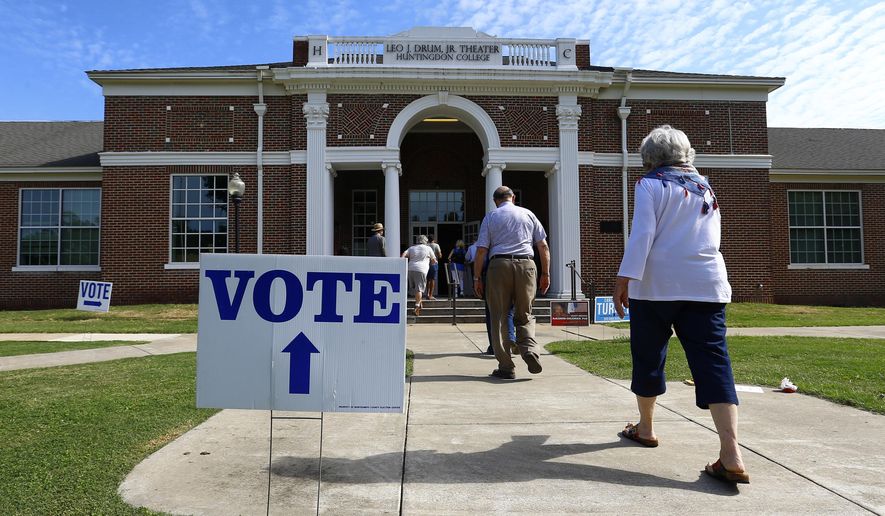The clustering of America’s most highly educated people in economically dynamic regions has created a “brain drain” from poorer states that is fueling cultural divisions, according to a congressional study exploring data as far back as 1940.
The report, “Losing Our Minds: Brain Drain Across the United States” from Congress’ Joint Economic Committee, concluded that migration of America’s most educated citizens to a handful of states and cities has created a “winner-take-all” geographic divide between talent magnets and communities left behind.
The wider consequences of people “leaving behind more rural and post-industrial states” for more economically vibrant areas stretch beyond economic inequality by adding to a worsening “social segregation” across the country, the researchers wrote.
“[Brain drain] also exacerbates political and cultural divides as well,” the report said. “Americans segregate themselves into communities where they more frequently reside near those similar to themselves, decreasing the likelihood of rubbing shoulders with those who see the world differently.”
The findings reinforce the red state-blue state schism between conservatives and liberals noted by social scientists studying electoral results over the past 30 years.
Pollsters say they expect this trend, which was clearly evident in the 2016 presidential elections and 2018 midterms, to continue in the 2020 presidential contest.
“Red areas are getting redder, and blue areas are getting bluer,” Jessica Taylor, a senior analyst for the Cook Political Report, told The Washington Times. “As you would expect, the difference in political viewpoints is huge.”
A December report by investment bank Goldman Sachs concluded that America’s economy is hard-wired against people of vastly different educational statuses from being neighbors. Less-educated rural people have “very little financial incentive to move” to cities because urban areas are so much more expensive than the countryside, Goldman Sachs analysts wrote.
Meanwhile, the “financial rewards” of city employment often hold back “well-educated workers such as doctors, engineers, and teachers” from leaving for lower paying rural areas.
In its analysis of what brain drain looks like across the 50 states, the congressional Joint Economic Committee reached many similar conclusions. The findings, published late last month, explored data from 1940 through the 2000 decennial census, in addition to the 2010 and 2017 American Community Surveys.
The researchers focused on highly educated people or “someone in the top third of the national education distribution” ages 31 to 40 who were either “movers” or “leavers,” who headed off to different states, or “stayers,” who remain in their home states.
Over the past three-quarters of a century, states that attracted and/or kept the most highly educated residents are located along the Boston-Washington, D.C., corridor and on the West Coast: Massachusetts, New York, New Jersey, Maryland, California, Oregon and Washington state. Illinois, Texas, Colorado and Arizona also ranked highly in that category.
The most brain drain has occurred in northern New England, the Rust Belt, the Plains and the Southeast: New Hampshire, Vermont, Pennsylvania, Ohio, Indiana, Michigan, Wisconsin, Missouri, North and South Dakota, Iowa, West Virginia, Kentucky, Tennessee, South Carolina, Alabama, Mississippi and Louisiana.
Richard Longworth, a distinguished fellow on global cities at the Chicago Council of Global Affairs, said the “economic anxiety narrative” across rural America “is persistent, growing and has fueled brain drain.”
“If you are rural and educated and really want to cut a swath in the world, you go to New York or Chicago or Atlanta, Richmond or Pittsburgh.” Mr. Longworth told The Times. “Young people leave rural areas that lack opportunity and generally never look back.”
Mr. Longworth, author of the 2007 book “Caught in the Middle: America’s Heartland in the Age of Globalism,” said the Great Recession accelerated several key factors that make rural life difficult, including flattening incomes, shrinking employment opportunities and worsening housing stock.
The Bureau of Labor Statistics has found that to be the case. Since the economic downturn of 2009, job growth in leading cities has climbed about 14% but just under 3% in rural areas, the bureau’s statistics show.
Brain drain has become such a pressing issue that state officials in harder-hit regions have increased public policy efforts to reverse the trend, congressional researchers said.
In 2016, for instance, Hawaii Gov. David Ige pushed for his state to invest $10 million in innovation jobs. He said the effort was aimed at “stopping that brain drain.”
While governor of Indiana from 2005 to 2013, Mitch Daniels also focused on brain drain. He is now the president of Purdue University, which has launched a “Brain Gain Initiative” focused on luring alumni back to the Hoosier State.
In 2017, Ohio’s legislature introduced a bipartisan proposal to reduce brain drain, which included a student debt relief initiative designed to keep young talent from leaving.
“State and local policymakers are understandably focused on the economic consequences of brain drain,” the congressional report concluded. “But anyone concerned about the health of associational life in America should worry that what this report has mapped out, to some extent, is the geography of social capital drain.”
From the perspective of a pollster, Ms. Taylor of the Cook Political Report said education always influences political perspectives, as does gerrymandering political boundaries to favor one party over the other.
“Those factors are unlikely to change anytime soon,” she said.
• Dan Boylan can be reached at dboylan@washingtontimes.com.




Please read our comment policy before commenting.